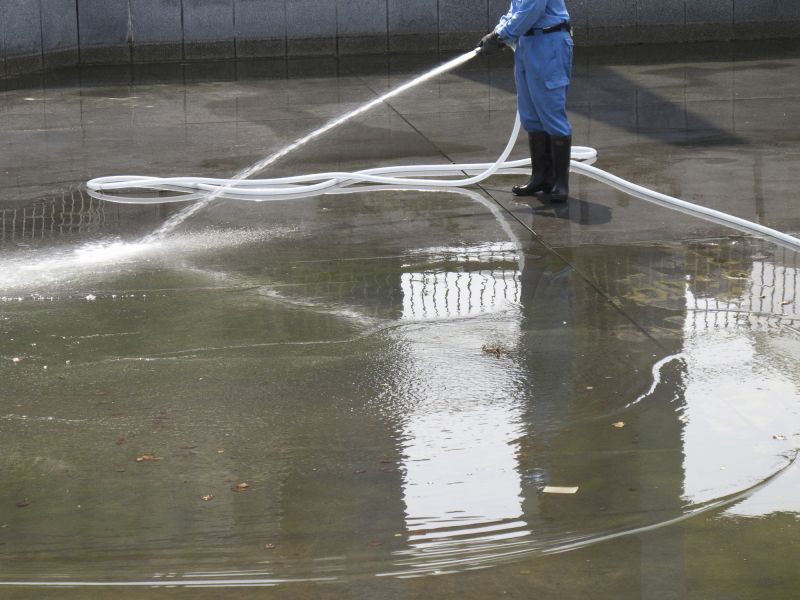Expert Picks For Reliable Drainage Service Products
A curated list of trusted tools and equipment that enhance efficiency and ensure long-lasting drainage solutions.
 In New Albany, Indiana, maintaining effective drainage systems is essential for both residential and commercial properties. Proper drainage helps prevent water accumulation, reduces the risk of flooding, and protects foundations from water damage. When selecting products for drainage service, it is important to consider various factors such as the size of the area, the type of soil, and the volume of water that needs to be managed.
In New Albany, Indiana, maintaining effective drainage systems is essential for both residential and commercial properties. Proper drainage helps prevent water accumulation, reduces the risk of flooding, and protects foundations from water damage. When selecting products for drainage service, it is important to consider various factors such as the size of the area, the type of soil, and the volume of water that needs to be managed.
Top Overall Option
Flexible Drainage Pipe System
A versatile and adaptable drainage pipe system that can be easily installed in various configurations to suit different property layouts. Made from durable materials, it offers reliable water flow management and is suitable for both residential and commercial applications. Its flexibility allows for easier installation around obstacles, making it a practical choice for many drainage projects.
Types of Products For Drainage Service
Corrugated Drainage Pipes
Lightweight, flexible pipes ideal for surface and subsurface drainage applications, often used in yard and garden drainage systems.
French Drain Kits
Pre-packaged systems that include perforated pipes, gravel, and fabric, designed to redirect surface and groundwater away from foundations.
Sump Pumps
Mechanical devices used to remove accumulated water from basements or crawl spaces, especially in areas prone to flooding.
Catch Basins
Grated openings that collect surface water and direct it into underground drainage pipes, preventing pooling on driveways and lawns.
Storm Drain Grates
Heavy-duty grates installed over storm drains to prevent debris from clogging the system while allowing water flow.
Perforated Drain Tiles
Underground pipes with holes that facilitate water infiltration into drainage systems, often used in foundation or yard drainage.
Drainage Gravel
Crushed stone used to improve drainage around pipes and in French drains, providing stability and filtration.
Pipe Connectors and Fittings
Components that join different sections of drainage pipes, ensuring secure and leak-proof connections.
Drainage Socks
Protective fabric sleeves that surround perforated pipes, preventing soil and debris from clogging the system.
Channel Drain Systems
Linear drains that collect surface water along walkways, driveways, or patios, directing it to underground pipes.
Water Detention Systems
Structures designed to temporarily hold excess water during heavy rains, reducing runoff and flooding risks.
Erosion Control Blankets
Protective coverings that stabilize soil and prevent erosion around drainage installations.
Underground Drainage Chambers
Modular units that facilitate large-scale water management in commercial or extensive landscape projects.
Rainwater Harvesting Systems
Systems that collect and channel rainwater for reuse, reducing runoff and supporting sustainable water management.
Popular Choices
Widely used in yard drainage and foundation systems for their ease of installation and effective water diversion.
Devices that improve the efficiency of catch basins by trapping debris and facilitating water flow.
Commonly installed in basements to manage groundwater and prevent flooding during heavy rains.
Popular for managing surface water along walkways and driveways, helping to prevent pooling.
Essential components for urban drainage, preventing debris entry and ensuring consistent water flow.
Convenient solutions for redirecting water away from problem areas around properties.
Often used in conjunction with pipes to improve drainage and filtration.
Ideal for large-scale or complex drainage projects, providing modular water management options.
Effective in controlling stormwater runoff in commercial and residential developments.
Protect perforated pipes from soil clogging, extending system longevity.
Used to stabilize soil around drainage areas, especially on slopes.
Increasingly popular for managing stormwater and conserving water resources.
Drainage solutions can range from simple tools to complex systems designed to handle large volumes of water. For small-scale projects, basic drainage pipes and catch basins may suffice, while larger properties might require advanced systems like French drains or sump pump setups. Ensuring that the chosen products are compatible with local conditions and meet safety standards is crucial for long-term effectiveness.
Proper installation and maintenance of drainage products are key to their performance. Regular inspection can help identify potential issues such as clogs or shifts in piping, allowing for timely repairs. Consulting with local suppliers or drainage specialists can provide valuable insights tailored to the specific needs of properties in New Albany, IN. Investing in quality drainage products can contribute to the longevity and resilience of your property, especially during heavy rainfall seasons.
Key Buying Considerations
- Assess the volume of water needing drainage to select appropriately sized products.
- Consider the type of soil and landscape to determine suitable drainage solutions.
- Evaluate the ease of installation and whether professional help is needed.
- Check compatibility of piping and fittings for seamless integration.
- Ensure materials are durable and resistant to corrosion or degradation over time.
- Identify whether the system requires maintenance access points or cleanouts.
- Determine the local climate and rainfall patterns to choose effective drainage capacity.
- Review local building codes and regulations related to drainage systems.
- Consider the potential for future expansion or modifications to the drainage setup.
- Factor in budget constraints while prioritizing quality and longevity.
- Choose products with clear installation instructions or technical support options.
- Look for systems that minimize clogging and facilitate easy cleaning.
- Evaluate the aesthetic impact if visible components are part of the landscape.
- Consider environmental factors such as soil permeability and water table levels.
- Decide between permanent solutions and temporary or modular options based on project scope.
